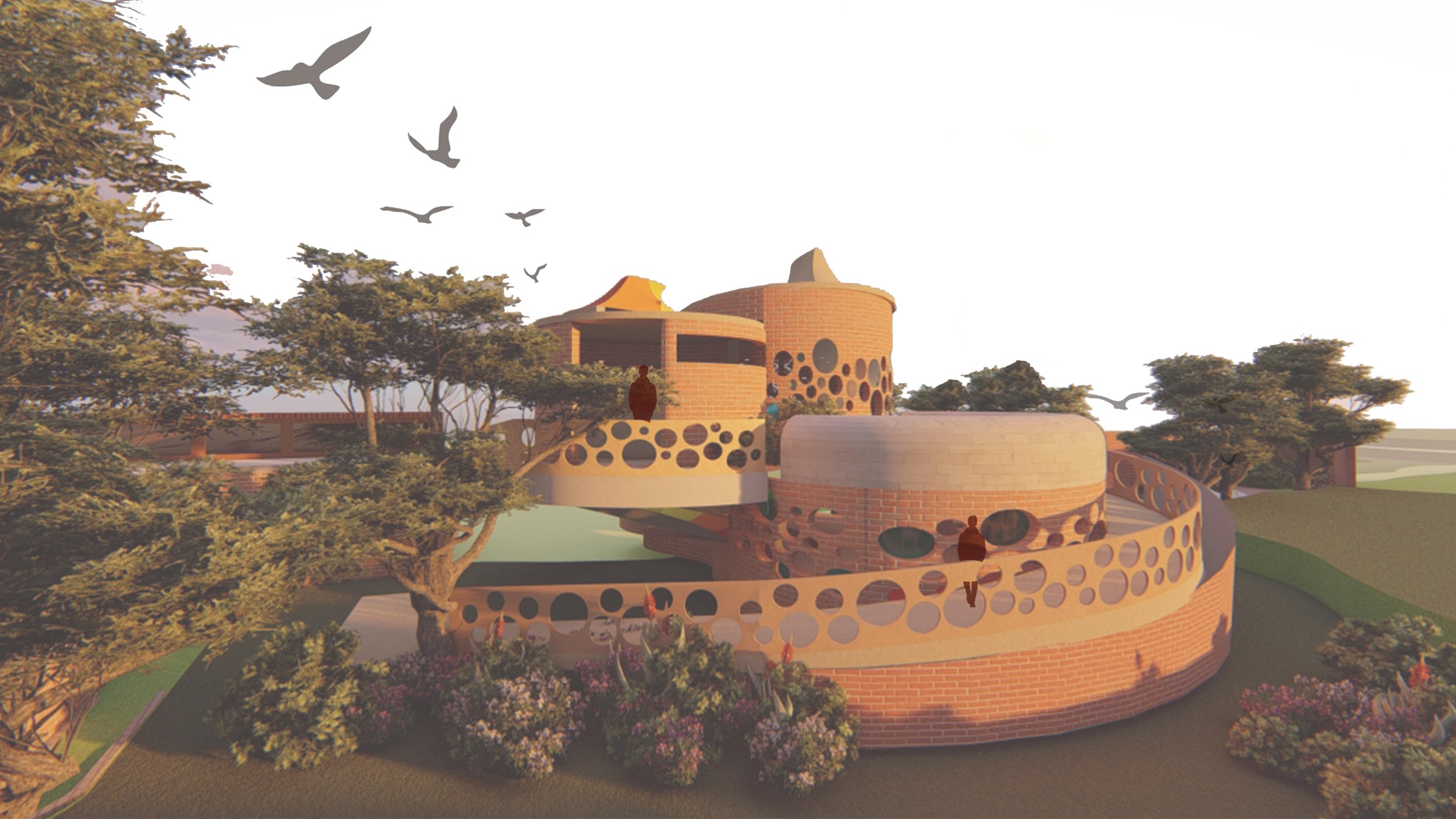top architecture design thesis 2021


BMS SCHOOL OF ARCHITECTURE
BENGALURU, INDIA

Design thesis authored by
anagha ajay
share
THESIS SPECIFICATIONS
Thesis Title: RAKSHA – Re-imagining Special Homes
Project type: Juvenile Correction facilities
Year of completion: 2021
Area of Interest
Impact of architectural design interventions incorporating spatial and visual Art Therapy methodology in developing a healing environment in Juvenile Correction facilities.
In the recent years, India has witnessed a spike in Juvenile delinquency cases at an alarming rate. The recent amendments made in the Juvenile Justice Act 2000, post the traumatic incident of the 2016 Nirbhaya gangrape in Delhi, carved a drastic impact on the Juvenile justice system of India. The amendment stated that accused persons between the ages of 16 to 18 may be tried as adults in matters dealing with the commitment of heinous crimes such as murder, rape and sexual assault.
Though the passing of this bill flattened the graph in the interim, with the impact of the issue slowly abbreviating, juvenile crime rates in India peaked at a new rate.
Of the convicted cases, it was further established that, around 75% of adjudicated juveniles were diagnosed with various mental illness, with patients undergoing depression, anxiety and stress being predominantly high in numbers. These findings were traced back to the issues of societal exclusiveness and anti-social behavioural traits common to the adjudicated delinquents. (Crime Analysis Forum 2018)
Lacking an understanding of societal values and their inability to place themselves as an individual in a community, enforced their concepts of isolation and indifferent behaviours. This feeling of detachment from one’s society induces a sense of alienation from, and disdain towards their surroundings, affecting their mental health, which further results in their lack of judgement of situations.
This multi-faceted issue requires a multi-disciplinary reform.
Medical assistance and psychological help become crucial in assessing, treating and re-introducing the concerned individuals. The surroundings nurturing them into aware and responsible citizens is deemed vital in this correctional process.
Introducing architecturally therapeutic spaces incorporating the concepts and methodologies of Art Therapy, encouraging community involvement, engaging in educational activities, catering to the advancement of their mental health and assisting the overall development, will the aim of this project.
Current Practices
Judicial System
- Punishment over Rehabilitation
- Borstal Schools are a type of Youth detention centres in India used specifically to house juveniles that classify under “Children in conflict with law”
Art Therapy
- A developmental approach to Art Therapy is used especially among those therapists who work with children, and includes, psychosocial, psychosexual and object relations approaches.
- Various forms of Art therapy used are- Music therapy, Sculpture therapy, Movement therapy, Psychodrama, Poetry and expressive therapies.
Academic Standpoints
- Increasing Juvenile offenders in the country.
The issue of Punishment over Correction invokes a streak of violence and rebellion, instead of a chance for reform. Imbibing the fundamentals of art therapy and sensory design in their surroundings, allows for their holistic growth as an individual. - Impact of art therapy on young minds.
Involvement in art forms such as Music, Dance, Theatre, poetry, painting etc allow young minds to descend to a space deep within themselves. (Parsons 2009) - Fighting the stigma around mental health issues.
In the present day Juvenile Detention centres in India, little or no importance is given to the treatment of detainees undergoing mental disorders such as anxiety, depression and stress among others. - The impact of architectural spaces in providing healing environments: Parson’s 2009 study establishes an interlink between one’s state of mind and their surroundings. The Architecture of a space, it’s reciprocation to light, air quality and interaction of a space with people, have significant impacts on one’s mental health.
- Accommodating a gender neutral/gender sensitive approach: The lack of women’s facilities have led to certain facilities housing women and young girls, in a detention centre primarily designed for boys/men. This has caused grave distressing incidents.
ARCHITECTURAL DESIGN PROBLEM/ PROJECT PROPOSAL
USP
A co-ed Juvenile Correction Facility designed as a therapeutic space, deriving concepts of Art Therapy into built form.
An intentional mixed gender facility would entail gender neutral architecture giving importance to community gathering spaces and other open/semi-open areas.
Architectural Challenges
- Creating spaces and volumes that interact with the admitted delinquents.
- Maintaining adequate amount of light and ventilation.
- Systems of Indoor and outdoor air quality.
- Textures, materials and colour palette involved in the design catering to mental healing.
- Movement and circulation spaces.
- A three-way interaction of the built, it’s inhabitants, and the natural open spaces.
-Interventions regarding the “threshold space” – linkage between public and private space - Designing spaces that adapt with the user.
Research/Design Approach
- It is deemed vital to understand the correlation between said spaces and their psychological impact on one’s mind. ( Lino Bianco, Children’s spaces: A study of the marriage of design and child psychology, 2008)
- Theory of Cognitive pattern Recognition
- Theories of Juvenile delinquencies and behavioural patterns
- Ergonomics
- Concepts of ‘Soft Architecture’
- Concepts of Socio-architecture proposed by Humphry Osmond (psychologist) and Kyo Izumi (architect)
Sheets
the end
Copyright information: ©️ Student author 2022. Prior written authorization required for use.
Request permissions: If you wish to use any part of the documentation forming part of the undergraduate thesis submitted to DSGN arcHive, please seek prior permission from the concerned student author through the respective college/university.
Exclusion of liability: DSGN arcHive and its owner do not undertake any obligation to verify the ownership of any content submitted for publication/broadcast on this website and shall not be liable for any infringement of copyright by, or unauthorized use of, such content.
HOMEPAGE
Copyright © 2025 DSGN arcHive
